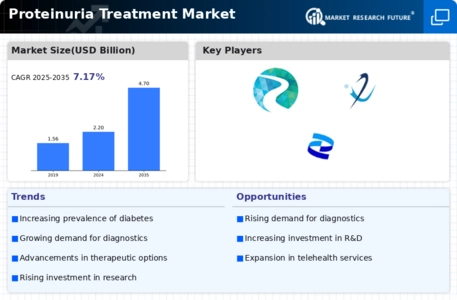By region, the study segments the market into North America, Europe, Asia-Pacific, and the rest of the world. In North America, the proteinuria treatment market held the largest market share in 2022 due to the presence of major players in the US such as Chinook Therapeutics, Inc. (US), Travere Therapeutics (US), and Pfizer, Inc. (US). In addition, the rising incidences of IgAN are fueling the North America region’s growth.
As per the National Kidney Foundation, in March 2023, approximately 150,000 people in the US were diagnosed with IgAN, which is a rare kidney disease (RKD) that may lead to kidney failure due to glomerular disease.
Hence, the presence of major players in the region and increasing incidences of IgAN, a rare disease, are fostering the growth of the North American proteinuria treatment market.
Further, the major countries studied are: The US, Canada, France, Germany, the UK, Italy, Spain, China, Japan, India, Australia, South Korea, and Brazil.
FIGURE 3: PROTEINURIA TREATMENT MARKET, BY REGION, 2022 & 2032 (USD BILLION)

Source: Secondary Research, Primary Research, Market Research Future Database, and Analyst Review
The European proteinuria treatment market accounted for the second-largest market share due to growing incidences of chronic kidney diseases. The European Union announced in February 2022 that approximately 100 million people will suffer from chronic kidney disease (CKD) in Europe by 2040, which is a lucrative opportunity for the proteinuria treatment market. Proteinuria is found in all CKD patients because CKD patients’ kidneys are unable to filter protein due to damage to the kidney arteries.
Furthermore, the Germany proteinuria treatment market held the largest market in 2022, and the UK proteinuria treatment market is projected to be the fastest-growing market in the Europe region.
The Asia-Pacific proteinuria treatment market is the fastest-growing region from 2023 to 2032, owing to the growing incidence of kidney diseases and the rising geriatric population in the region. In March 2022, the George Institute revealed that major cases of CKD have been found in China and India due to the presence of a larger population and increased cases of diabetes in the eastern, southern, and south-eastern regions of Asia. Moreover, as per Johns Hopkins University (US), there is a 50% chance of having CKD among 75-year-old people.
Additionally, through secondary research, it has been found that the geriatric population is living in Asian countries, mostly in East and Northeast Asia, with approximately 329 million in 2022. Furthermore, the China proteinuria treatment market accounted for the largest market share in 2022, and the India proteinuria treatment market is projected to be the fastest-growing market in the Asia-Pacific region.















Leave a Comment